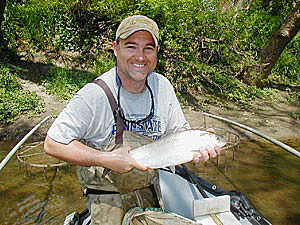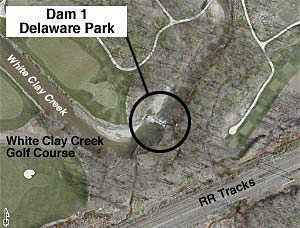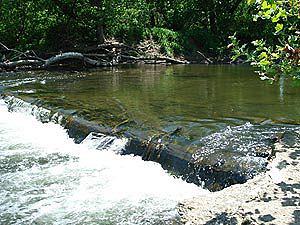
ADVERTISEMENT
- Rozovsky wins prestigious NSF Early Career Award
- UD students meet alumni, experience 'closing bell' at NYSE
- Newark Police seek assistance in identifying suspects in robbery
- Rivlin says bipartisan budget action, stronger budget rules key to reversing debt
- Stink bugs shouldn't pose problem until late summer
- Gao to honor Placido Domingo in Washington performance
- Adopt-A-Highway project keeps Lewes road clean
- WVUD's Radiothon fundraiser runs April 1-10
- W.D. Snodgrass Symposium to honor Pulitzer winner
- New guide helps cancer patients manage symptoms
- UD in the News, March 25, 2011
- For the Record, March 25, 2011
- Public opinion expert discusses world views of U.S. in Global Agenda series
- Congressional delegation, dean laud Center for Community Research and Service program
- Center for Political Communication sets symposium on politics, entertainment
- Students work to raise funds, awareness of domestic violence
- Equestrian team wins regional championship in Western riding
- Markell, Harker stress importance of agriculture to Delaware's economy
- Carol A. Ammon MBA Case Competition winners announced
- Prof presents blood-clotting studies at Gordon Research Conference
- Sexual Assault Awareness Month events, programs announced
- Stay connected with Sea Grant, CEOE e-newsletter
- A message to UD regarding the tragedy in Japan
- More News >>
- March 31-May 14: REP stages Neil Simon's 'The Good Doctor'
- April 2: Newark plans annual 'wine and dine'
- April 5: Expert perspective on U.S. health care
- April 5: Comedian Ace Guillen to visit Scrounge
- April 6, May 4: School of Nursing sponsors research lecture series
- April 6-May 4: Confucius Institute presents Chinese Film Series on Wednesdays
- April 6: IPCC's Pachauri to discuss sustainable development in DENIN Dialogue Series
- April 7: 'WVUDstock' radiothon concert announced
- April 8: English Language Institute presents 'Arts in Translation'
- April 9: Green and Healthy Living Expo planned at The Bob
- April 9: Center for Political Communication to host Onion editor
- April 10: Alumni Easter Egg-stravaganza planned
- April 11: CDS session to focus on visual assistive technologies
- April 12: T.J. Stiles to speak at UDLA annual dinner
- April 15, 16: Annual UD push lawnmower tune-up scheduled
- April 15, 16: Master Players series presents iMusic 4, China Magpie
- April 15, 16: Delaware Symphony, UD chorus to perform Mahler work
- April 18: Former NFL Coach Bill Cowher featured in UD Speaks
- April 21-24: Sesame Street Live brings Elmo and friends to The Bob
- April 30: Save the date for Ag Day 2011 at UD
- April 30: Symposium to consider 'Frontiers at the Chemistry-Biology Interface'
- April 30-May 1: Relay for Life set at Delaware Field House
- May 4: Delaware Membrane Protein Symposium announced
- May 5: Northwestern University's Leon Keer to deliver Kerr lecture
- May 7: Women's volleyball team to host second annual Spring Fling
- Through May 3: SPPA announces speakers for 10th annual lecture series
- Through May 4: Global Agenda sees U.S. through others' eyes; World Bank president to speak
- Through May 4: 'Research on Race, Ethnicity, Culture' topic of series
- Through May 9: Black American Studies announces lecture series
- Through May 11: 'Challenges in Jewish Culture' lecture series announced
- Through May 11: Area Studies research featured in speaker series
- Through June 5: 'Andy Warhol: Behind the Camera' on view in Old College Gallery
- Through July 15: 'Bodyscapes' on view at Mechanical Hall Gallery
- More What's Happening >>
- UD calendar >>
- Middle States evaluation team on campus April 5
- Phipps named HR Liaison of the Quarter
- Senior wins iPad for participating in assessment study
- April 19: Procurement Services schedules information sessions
- UD Bookstore announces spring break hours
- HealthyU Wellness Program encourages employees to 'Step into Spring'
- April 8-29: Faculty roundtable series considers student engagement
- GRE is changing; learn more at April 15 info session
- April 30: UD Evening with Blue Rocks set for employees
- Morris Library to be open 24/7 during final exams
- More Campus FYI >>
9:54 a.m., Feb. 7, 2011----The Water Resources Agency (WRA), a unit of the University of Delaware's Institute for Public Administration (IPA), was awarded a $42,000 grant from the FishAmerica Foundation (FAF), part of the American Sportfishing Association, to supplement ongoing work to help restore American shad, hickory shad, and other anadromous fish to the National Wild and Scenic White Clay Creek near UD's Newark campus.
The FAF funds will be used for research, design, and investigative studies for the removal of Dam No. 1 at Delaware Race Track in Stanton, Del., seven miles downstream from the UD campus. Fish-abundance studies conducted by Delaware Department of Natural Resources and Environmental Control (DNREC) fisheries biologists last spring confirmed that this dam is indeed a barrier to migration and spawning of anadromous fish; up to 1,000 hickory shad were detected downstream from the dam and none upstream.
Removal of Dam No. 1 would reopen four miles of the White Clay Creek to passage of shad and striped bass for the first time since the American Revolution. DNREC biologists noted that this would be the state's first dam removal for fish passage.
Principal investigators WRA director Gerald Kauffman and assistant policy scientist Martha Corrozi Narvaez are leading a multidisciplinary research and design team that includes IPA associate policy scientist Andrew Homsey; School of Public Policy and Administration graduate students Erin McVey, Stacey Mack, and Sarah Chatterson civil and environmental engineering undergraduate students Dustin Briggs, Taylor King, Davis Specht, Kim Teoli, Lawrence Latour, and Colin Nagle; and geography undergrad Kayla Iuliano.
Students working in connection with this project have uncovered historic documents that indicate Dam No. 1 was built circa 1770 to divert water to a millrace and mill at the historic Hale-Byrnes House in Stanton.
Kauffman noted, “This is a fascinating research endeavor that combines watershed restoration, fisheries revitalization, and historic preservation in an interdisciplinary effort that relies heavily on our UD student team in engineering, planning, and geography.”
Once the snow melts this winter, the project team will perform a field survey and conduct hydraulic engineering, water- and sediment-quality, stream geomorphology, and historic-preservation studies.
“Our hypothesis is that with improved water quality, removal of the dam will reopen long-closed spawning habitat along another four stream miles, thus spurring reintroduction of American shad upstream,” Kauffman said. “After the dam is removed, we plan to conduct future research with DNREC fisheries biologists to monitor restoration of the shad population and test this hypothesis.”
Removal of this initial dam is the first step in a five-year strategic plan developed by WRA under funding by the National Fish and Wildlife Foundation and U.S. National Park Service to remove six dams and reopen fish passage along 14 miles of the National Wild and Scenic White Clay Creek between tidewater at Stanton to the Pennsylvania state line.
This work is a public-private-academic partnership among UD and DNREC's Division of Fish and Wildlife, Duffield Associates, Delaware Race Track, Kim Burdick (curator of the Hale-Byrnes House), and the White Clay Creek Watershed Management Committee.
Article by Mark Deshon




